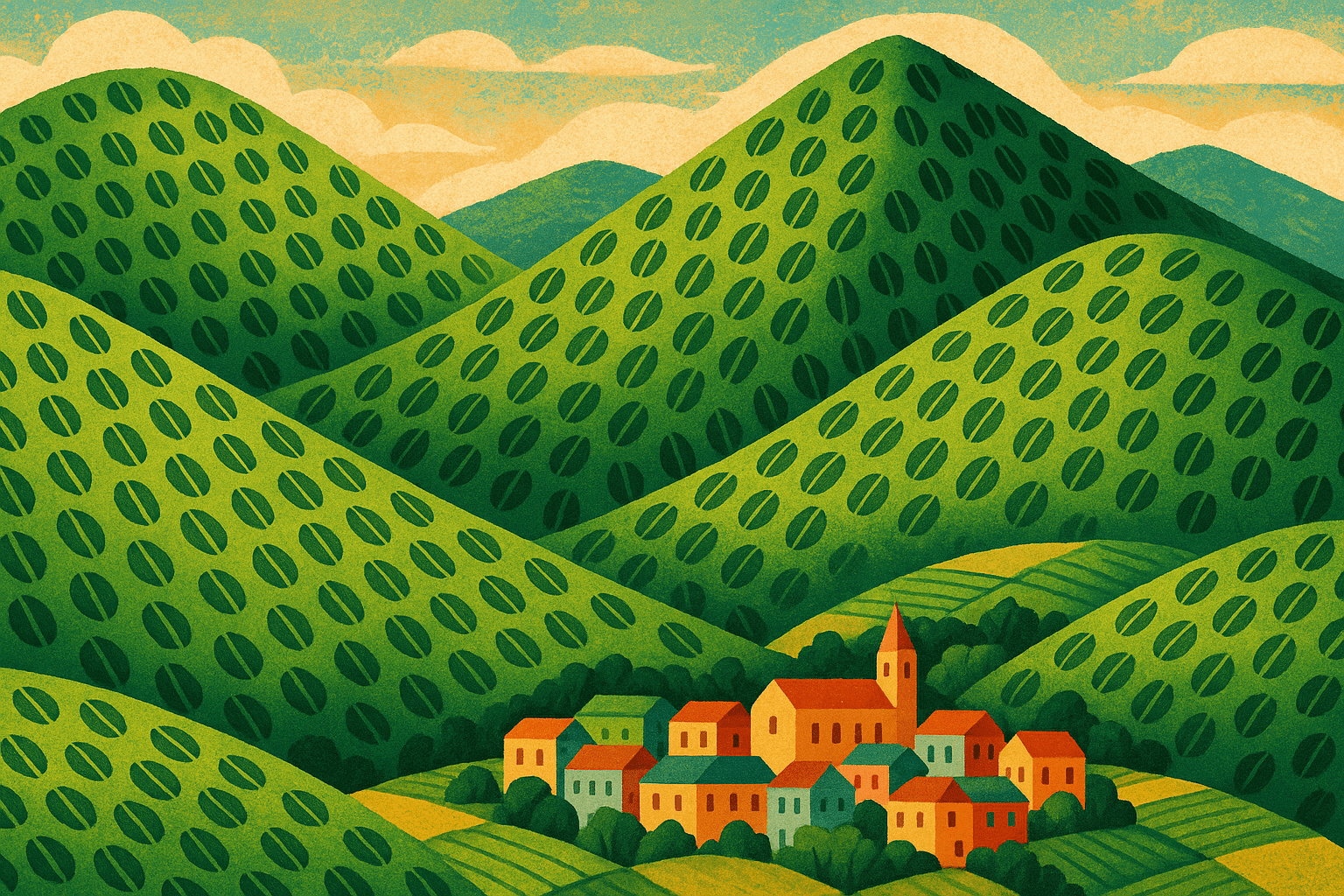A Landscape Steeped in Coffee: The Physical Geography
The magic of the Eje Cafetero begins with its geography. The region, primarily encompassing the departments of Caldas, Risaralda, and Quindío, is nestled within the towering peaks of the Colombian Andes, specifically the Central and Western Cordilleras. This mountainous terrain is the first crucial ingredient in the recipe for world-class coffee.
The Altitude Advantage
Coffee, particularly the high-quality Arabica variety that Colombia is famous for, is a fickle plant. It thrives not just anywhere, but within a specific altitudinal band. The ideal elevation is between 1,200 and 1,800 meters (about 4,000 to 6,000 feet) above sea level. In the Eje Cafetero, the mountain slopes provide an almost endless supply of this perfect growing environment. At this height, the climate is temperate—often described as an “eternal spring”—with average temperatures hovering around a pleasant 18-24°C (64-75°F). Crucially, this altitude protects the delicate coffee cherries from the scorching heat of the lowlands and the damaging frost of the higher peaks.
Volcanic Soils and Perfect Rains
The Andes are part of the Pacific Ring of Fire, and the Eje Cafetero sits in the shadow of several volcanoes, most notably the Nevado del Ruiz. While this presents a geological hazard, it also provides an incredible gift: volcanic soil. Over millennia, eruptions have blanketed the region in a deep layer of ash rich in nitrogen, potassium, and other organic materials. This fertile soil provides the perfect nutrient base for coffee plants to flourish, imparting a unique, mild, and well-balanced flavor to the beans.
Complementing the soil is a distinct biannual rainy season. The consistent rainfall, followed by periods of sunshine, allows the coffee cherries to ripen slowly and evenly. This climate pattern is so reliable that it allows for two harvest seasons a year, a rarity in the coffee-growing world and a significant economic advantage for the region’s farmers.
Carving a Culture from the Mountainside: The Human Imprint
If the physical geography provided the canvas, it was human hands that painted the masterpiece. The cultural landscape of the Eje Cafetero is a direct result of a 19th-century settlement process known as the “Paisa Colonization.” Hardy, entrepreneurial families from the department of Antioquia migrated south, seeking new land and opportunity.
A Tapestry of Towns and Fincas
These settlers, known as Paisas, faced the immense challenge of farming on vertiginous slopes. Instead of fighting the topography, they adapted to it. They carved out small- to medium-sized family farms, or fincas, on the steep hillsides, creating a patchwork quilt of green that stretches as far as the eye can see. This tradition of small-scale, family-owned agriculture persists today and is a core reason for the UNESCO designation—it represents a sustainable and community-focused way of life.
The towns they built are a marvel of geographical adaptation. Settlements like Salento, Filandia, and Jardín were not founded in valleys, but on the flattened ridges of the mountains. This strategic placement provided more stable ground, protected them from landslides and flooding, and offered commanding views over their precious coffee crops. The architecture is instantly recognizable: brightly painted wooden houses with wrap-around balconies, built using the strong, flexible local guadua (a type of giant bamboo), and always centered around a main square with a towering church.
The Willys Jeep: A Geographical Icon
The region’s rugged geography presented a formidable transportation challenge. How do you move people and sacks of coffee beans up and down steep, often unpaved mountain tracks? The answer came after World War II in the form of the Willys Jeep. These sturdy, powerful 4×4 vehicles were perfectly suited for the terrain. Today, these colorfully decorated Jeeps, known as “Yipaos”, are more than just transport; they are a cultural symbol of the region’s resilience and ingenuity, a direct and iconic response to a geographical problem.
From Local Bean to Global Icon: The Geography of Identity
The unique combination of high altitude, volcanic soil, and dedicated farming practices produces a coffee bean with a distinct flavor profile—mild, smooth, and rich with a hint of citrusy acidity. This quality allowed Colombian coffee to stand out in the global market.
The National Federation of Coffee Growers of Colombia (FNC) capitalized on this geographical advantage with a brilliant marketing strategy. They created the character of Juan Valdez, a fictional farmer always accompanied by his mule, Conchita. Juan Valdez wasn’t just a logo; he was the personification of the Eje Cafetero’s geography. He represented the hardworking farmer, the steep mountains, and the commitment to quality. This campaign successfully linked the product—Colombian coffee—to a specific place and a specific culture, creating one of the most successful origin-based brands in the world.
In 2011, UNESCO officially recognized the “Coffee Cultural Landscape of Colombia” as a World Heritage site. The designation celebrated the region as an “exceptional example of a sustainable and productive cultural landscape” born from the “centennial tradition of coffee growing on small plots in the high forest and the way farmers have adapted cultivation to difficult mountain conditions.”
More Than Just a Cup of Coffee
The Colombian Coffee Axis is a living lesson in geography. It demonstrates how physical features—altitude, soil, climate—can provide the potential for greatness, but how it is human culture, adaptation, and spirit that ultimately realizes it. Every stunning vista of coffee-covered slopes, every brightly-painted balcony in a hilltop town, and every rumbling Willys Jeep tells a part of this story. It’s a reminder that a place is never just its coordinates on a map; it’s a dynamic, evolving landscape where the earth and its people are in constant conversation, a conversation that, in this corner of Colombia, tastes wonderfully of coffee.
